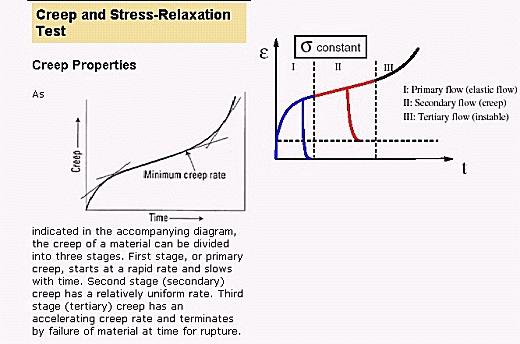| CREEP
A broad term for time dependent deformation of most rocks which can occur by a variety of mechanim. The typical plots are time-strain curves and by constructing the deformation mechanism maps. An axial differential stress is built up rapidly on the sample and held constant. The stress is not increased but held at a uniform value. Strain is measured as function of time and the results are plotted as strain vs time plot. Three stages of creep are primary or transient creep, during which strain rate decreases following initial elastic response, the secondary or steady-state creep, during which strain rate is constant (linear), and finaly tertiary or accelerating creep, during which strain rate increases. If stress is removed during the experiment the material relaxes and recovers the elastic response, but permanent strain remains in the body, a part of which may be recovered with time, this being the cause of settlements of many engineering structures. Time settlements curves are therefore nothing but plots similar to those for creep tests. |

|